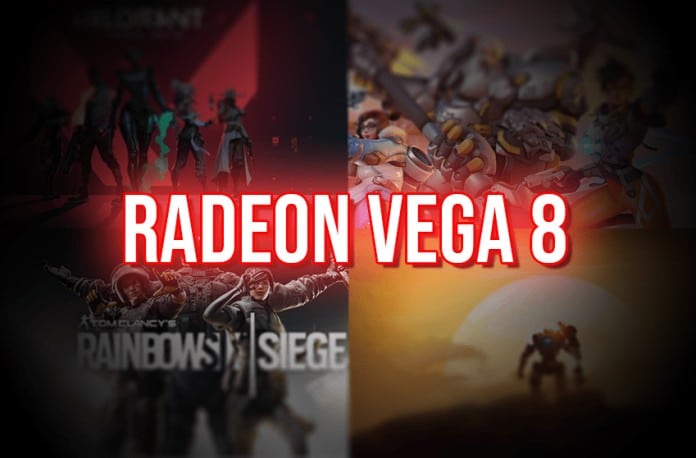
ryzen 3 2200g fortnite
Radeon Vega 8 is an AMD integrated graphics card that appears in both laptop processors and desktop versions. Aimed at the entry-level market, the GPU has a simpler profile and is suitable for lower-intensity tasks – such as spreadsheet management, for example – but can also run some lighter games at lower settings. Present in processors like Ryzen 5 5600G and also in laptops from Acer, Asus, Dell, and Lenovo, the Vega 8 is a relatively common graphics card in the market.
Below, we separated the main technical specifications of the component, variations, and performance levels between different generations of the GPU.
AMD Radeon Vega 8 datasheet
| AMD Radeon Vega 8 | |
|---|---|
| Release | 2017 |
| Clock | up to 1100MHz (Ryzens 2000/3000), 1750MHz (Ryzens 4000/5000) and 2100MHz (Ryzen 9 5980HX) |
| Cores | 8 compute units with 512 stream processors |
| RAM | DDR4 type shared with the processor |
| Memory Speed | Depends, it varies by system |
| Memory Interface | Depends, it varies by system |
| Bandwidth | Depends, it varies by system |
| TDP | up to 25 W |
Radeon Vega 8 Specifications
The Radeon Vega 8 is an entry-level integrated graphics card from AMD. It appeared in 2017, adapting the Vega architecture of some Radeon at the time to the integrated form factor. The component consists of a 512-core stream graphics processor (GPU) and can reach speeds in the range of 1,100 MHz, for Ryzens of the 2000/3000 series (to the Ryzen 5 2500). In addition, it reaches 1,750 MHz for newer Ryzens in the 4000/5000 series.
The rest of the configurations will depend on the model the card comes with. In laptops, the GPU will have memory specifications depending directly on what the laptop offers. In general, the recommendation is that the consumer prefers dual-channel machines with DDR4 RAM running at 2,400 MHz for the best performance.
Radeon Performance
According to AMD, the card has a performance that will hover in the range of what cards like the GeForce 940MX and GeForce MX150 offer. It would be sufficient to face current light games at a good performance level, such as Overwatch and League of Legends, or even Fortnite at lower resolutions and quality settings.
The performance expectation should vary depending on the processor generation. The most current Ryzen, with Vega 8 accessing higher speeds, should produce better results.
Vega 8 should vary greatly in performance depending on the machine it is installed in. Since the card relies on a power supply regulated by the processor, its performance level will fluctuate: in the best conditions, the Vega 8 would have 25 Watts on laptops (15 Watts in more typical use), which is an edge that can access higher levels of performance and in a more stable way.
Power Consumption
TDP values for AMD’s integrated card vary depending on the design of the component. In laptop processors, the power budget is more restricted and the board can dissipate a maximum of 15 W. As we detailed earlier, this margin has an impact on the performance.
For Radeon versions built into desktop APUs, there is more scope for heat and the card can generate up to 25 W in maximum performance scenarios.
Usage profiles
The Radeon Vega 8 caters for the entry-level market. It will perform well in basic activities like spreadsheets and lighter games. It is important to keep in mind that the performance of the card will vary a lot depending on the processor generation and the form factor of the computer. In desktops, with more power to operate, the Vega 8 should perform better than in laptops.
AMD Vega 8 Price and Main Competitors
As it is a simple card, AMD Vega 8 is positioned as an alternative to Intel’s integrated GPUs as well as simpler cards such as the 940MX and MX150.
It is not possible to buy the Vega 8 on its own. In our searches, we found the Radeon costing $274 in Lenovo’s IdeaPads. However, desktop processors equipped with the card start at $139 for the Ryzen 3 2200G (with the lowest performance version) and $169 for the Ryzen 5 5600G.